 W
WA monarchy is a form of government in which a person, the monarch, is head of state for life or until abdication. The political legitimacy and authority of the monarch may vary from restricted and largely symbolic, to fully autocratic, and can expand across the domains of the executive, legislative, and judicial. A monarchy can be a polity through unity, personal union, vassalage or federation, and monarchs can carry various titles such as emperor, king, queen, raja, khan, caliph, tsar, sultan, shah, or pharaoh.
 W
WAbsolute monarchy is a form of monarchy in which the monarch holds supreme autocratic authority, principally not being restricted by written laws, legislature, or unwritten customs. These are often hereditary monarchies. In contrast, in constitutional monarchies, the head of state's authority derives from or is legally bound or restricted by a constitution, legislature or unwritten customs.
 W
WAgnatic seniority is a patrilineal principle of inheritance where the order of succession to the throne prefers the monarch's younger brother over the monarch's own sons. A monarch's children succeed only after the males of the elder generation have all been exhausted. Agnatic seniority essentially excludes females of the dynasty and their descendants from the succession. Contrast agnatic primogeniture, where the king's sons stand higher in succession than his brothers.
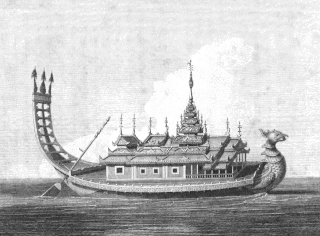 W
WA royal barge is a ceremonial barge that is used by a monarch for processions and transport on a body of water.
 W
WBicycle monarchy is a British term for the more informal and modest personal styles of the royal families of countries in Scandinavia and the Low Countries, particularly the Netherlands.
 W
WA circlet is a piece of headgear that is similar to a diadem or a corolla. The word circlet is also used to refer to the base of a crown or a coronet with or without a cap. Diadem and circlet are often used interchangeably, and "open crowns" with no arches, have also been referred to as circlets. In Greek this is known as stephanos and in Latin as corona aperta, though Stephanos is associated more with laurel wreaths and the crown of thorns said to have been placed on the head of Jesus.
 W
WThe Conference of Rulers in Malaysia is a council comprising the nine rulers of the Malay states, and the governors or Yang di-Pertua Negeri of the other four states. It was officially established by Article 38 of the Constitution of Malaysia, and is the only such institution in the world, according to the Malaysian National Library. Its main responsibility is the election of the Yang di-Pertuan Agong (King) and their deputy, the Timbalan Yang di-Pertuan Agong, which occurs every five years or when the positions fall vacant. Although its position in the process of elective monarchy is unique, the Conference of Rulers also plays a role in amending the Constitution of Malaysia and some other policies, in particular, those Articles which have been "entrenched", namely those pertaining to the status of the rulers, the special privileges of the indigenous Bumiputra, the status of the Malay language as the national language, and the clause governing the entrenchment of such Articles.
 W
WA constitutional monarchy, parliamentary monarchy, or democratic monarchy is a form of monarchy in which the monarch exercises authority in accordance with a written or unwritten constitution. Constitutional monarchies differ from absolute monarchies in that they are bound to exercise powers and authorities within limits prescribed by an established legal framework. Constitutional monarchies range from countries such as Liechtenstein, Monaco, Morocco, Jordan, Kuwait and Bahrain, where the constitution grants substantial discretionary powers to the sovereign, to countries such as the United Kingdom, the Netherlands, Spain, Belgium, Sweden, Malaysia and Japan, where the monarch retains significantly less personal discretion in the exercise of their authority.
 W
WA coronation is the act of placement or bestowal of a crown upon a monarch's head. The term also generally refers not only to the physical crowning but to the whole ceremony wherein the act of crowning occurs, along with the presentation of other items of regalia, marking the formal investiture of a monarch with regal power. Aside from the crowning, a coronation ceremony may comprise many other rituals such as the taking of special vows by the monarch, the investing and presentation of regalia to the monarch, and acts of homage by the new ruler's subjects and the performance of other ritual deeds of special significance to the particular nation. Western-style coronations have often included anointing the monarch with holy oil, or chrism as it is often called; the anointing ritual's religious significance follows examples found in the Bible. The monarch's consort may also be crowned, either simultaneously with the monarch or as a separate event.
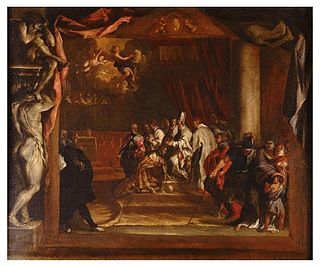 W
WCharles V was crowned Holy Roman Emperor by Pope Clement VII in the San Petronio Basilica in Bologna on 24 February 1530. He was the last Holy Roman Emperor to be crowned by a pope.
 W
WA coronet is a small crown consisting of ornaments fixed on a metal ring. By one definition, a coronet differs from other kinds of crowns in that a coronet never has arches, and from a tiara in that a coronet completely encircles the head, while a tiara does not. By a slightly different definition, a crown is worn by an emperor, empress, king or queen; a coronet by a nobleman or lady. See also diadem.
 W
WA crown is a traditional form of head adornment, or hat, worn by monarchs as a symbol of their power and dignity. A crown is often, by extension, a symbol of the monarch's government or items endorsed by it. The word itself is used, particularly in Commonwealth countries, as an abstract name for the monarchy itself, as distinct from the individual who inhabits it. A specific type of crown is employed in heraldry under strict rules. Indeed, some monarchies never had a physical crown, just a heraldic representation, as in the constitutional kingdom of Belgium, where no coronation ever took place; the royal installation is done by a solemn oath in parliament, wearing a military uniform: the King is not acknowledged as by divine right, but assumes the only hereditary public office in the service of the law; so he in turn will swear in all members of "his" federal government.
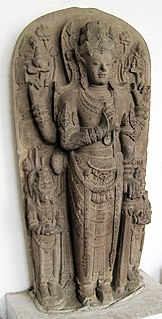 W
W"Devarāja" was the religious order of the "god-king", or deified monarch in medieval Southeast Asia.
 W
WThe divine right of kings, divine right, or God's mandate is a political and religious doctrine of political legitimacy in a monarchy. It stems from a specific metaphysical framework in which a monarch is pre-ordained to inherit the crown before their birth. Under this theory of political legitimacy the subjects of the crown are considered to have actively turned over the metaphysical selection of the king's soul – which will inhabit the body and rule them – to God. In this way, the "divine right" originates as a metaphysical act of humility or submission towards God. The divine right has been a key element for legitimizing many absolute monarchies.
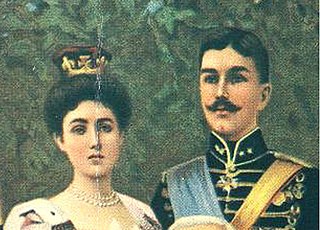 W
WA duchy, also called a dukedom, is a medieval country, territory, fief, or domain ruled by a duke or duchess, a high-ranking nobleman hierarchically second to the king or queen in European tradition. The term is used almost exclusively in Europe.
 W
WDurbar is a Persian-derived term meaning the kings’ or rulers’ noble court or a formal meeting where the king held all discussions regarding the state. It was used in India for a ruler’s court or feudal levy as the latter came to be ruled and later administered by foreigners. A durbar may be either a feudal state council for administering the affairs of a princely state, or a purely ceremonial gathering, as in the time of the British Empire in India.
 W
WA dynastic union is a type of federation with only two different states that are governed under the same dynasty, with their boundaries, their laws, and their interests remaining distinct from each other. It differs from a personal union in that a personal union is specifically under one monarch, but a dynastic union requires two monarchs.
 W
WA dynasty is a sequence of rulers from the same family, usually in the context of a feudal or monarchical system, but sometimes also appearing in republics. Alternative terms for "dynasty" may include "house", "family" and "clan", among others. The longest-surviving dynasty in the world is the Imperial House of Japan, otherwise known as the Yamato dynasty, whose reign is traditionally dated to 660 BC and historically attested from 781 CE.
 W
WAn enthronement is a ceremony of inauguration, involving a person—usually a monarch or religious leader—being formally seated for the first time upon their throne. Enthronements may also feature as part of a larger coronation rite.
 W
WA favourite (British) or favorite was the intimate companion of a ruler or other important person. In post-classical and early-modern Europe, among other times and places, the term was used of individuals delegated significant political power by a ruler. It was especially a phenomenon of the 16th and 17th centuries, when government had become too complex for many hereditary rulers with no great interest in or talent for it, and political institutions were still evolving. From 1600 to 1660 there were particular successions of all-powerful minister-favourites in much of Europe, particularly in Spain, England, France and Sweden.
 W
WHabsburg Monarchy, or Danubian Monarchy, or Habsburg Empire is a modern umbrella term coined by historians to denote the numerous lands and kingdoms of the Habsburg dynasty, especially for those of the Austrian line. Although from 1438 to 1806, a member of the House of Habsburg was also Holy Roman Emperor, the Holy Roman Empire itself is not considered to have been part of what is now called the Habsburg Monarchy.
 W
WAn Imperial Crown is a crown used for the coronation of emperors.
 W
WKhan is a historic title of Inner Asia used in some medieval Central Asian societies to refer to a ruler or military leader. It first appears among the Rouran and then the Göktürks as a variant of khagan and implied a subordinate ruler. In the Seljuk Empire, it was the highest noble title, ranking above malik (king) and emir (prince). In the Mongol Empire it signified the ruler of a horde (ulus), while the ruler of all the Mongols was the khagan or great khan. The title subsequently declined in importance. In Safavid Persia it was the title of a provincial governor, and in Mughal Empire it was a high noble rank restricted to courtiers. After the downfall of the Mughals it was used promiscuously and became a surname. Khan and its female forms occur in many personal names, generally without any nobiliary of political relevance, although it remains a common part of noble names as well.
 W
W"The king is dead, long live the king!", or simply "long live the king!" is a traditional proclamation made following the accession of a new monarch in various countries. The seemingly contradictory phrase simultaneously announces the death of the previous monarch and assures the public of continuity by saluting the new monarch.
 W
WLèse-majesté, a French term meaning "to do wrong to majesty", is an offence against the dignity of a reigning sovereign or against a state.
 W
WParamount is the highest authority, or that being of the greatest importance. The word was first used as a term of feudal law, of the overlord, the lord paramount, who held his fief from no superior lord, and was thus opposed to a mesne lord, one who held fief from a superior. Those who held their fiefs from one who was not a lord paramount were given the correlative term "paravail",. The word was confused by English lawyers with "avail," help, assistance, profit, and applied to the actual working tenant of the land, the lowest tenant or occupier.
 W
WMahārāja ; is a Sanskrit title for a "great ruler", "great king" or "high king". A few ruled mighty states informally called empires, including ruler Maharaja Sri Gupta, founder of the ancient Indian Gupta Empire and Chandragupta Maurya. 'Title inflation' soon led to most being rather mediocre or even petty in real power, which led to compound titles being used in an attempt to distinguish some among their ranks.
 W
WThe Mandate of Heaven is a Chinese political philosophy that was used in ancient and imperial China to justify the rule of the King or Emperor of China. According to this doctrine, heaven – which embodies the natural order and will of the universe – bestows the mandate on a just ruler of China, the "Son of Heaven". If a ruler was overthrown, this was interpreted as an indication that the ruler was unworthy, and had lost the mandate. It was also a common belief that natural disasters such as famine and flood were divine retributions bearing signs of Heaven's displeasure with the ruler, so there would often be revolts following major disasters as the people saw these calamities as signs that the Mandate of Heaven had been withdrawn.
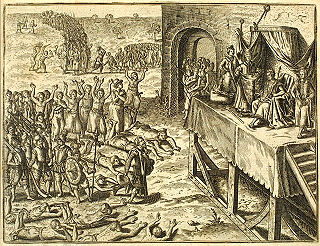 W
WThe Manikongo or Mwene Kongo was the title of the ruler of the Kingdom of Kongo, a kingdom that existed from the fourteenth to the nineteenth centuries and consisted of land in present-day Angola, Gabon, the Republic of the Congo, and the Democratic Republic of the Congo. The manikongo's seat of power was Mbanza Kongo, now the capital of Zaire Province in Angola. The manikongo appointed governors for the provinces of the Kingdom and received tribute from neighbouring subjects.
 W
WThe Nepalese royal massacre occurred on 1 June 2001, at the Narayanhiti Palace, the then-residence of the Nepalese monarchy. Nine members of the royal family, including King Birendra and Queen Aishwarya, were killed in a mass shooting during a gathering of the royal family at the palace. A government-appointed inquiry team named Crown Prince Dipendra as perpetrator of the massacre. Dipendra slipped into a coma after shooting himself.
 W
WPadishah, sometimes rendered as Padeshah or Padshah, is a superlative sovereign title of Persian origin.
 W
WIn modern heraldry, a royal cypher is a monogram or monogram-like device of a country's reigning sovereign, typically consisting of the initials of the monarch's name and title, sometimes interwoven and often surmounted by a crown. Such a cypher as used by an emperor or empress is called an imperial cypher. In the system used by various Commonwealth realms, the title is abbreviated as 'R' for 'rex' or 'regina'. Previously, 'I' stood for 'imperator' or 'imperatrix' of the Indian Empire.
 W
WRoyal intermarriage is the practice of members of ruling dynasties marrying into other reigning families. It was more commonly done in the past as part of strategic diplomacy for national interest. Although sometimes enforced by legal requirement on persons of royal birth, more often it has been a matter of political policy or tradition in monarchies.
 W
WIn modern heraldry, a royal cypher is a monogram or monogram-like device of a country's reigning sovereign, typically consisting of the initials of the monarch's name and title, sometimes interwoven and often surmounted by a crown. Such a cypher as used by an emperor or empress is called an imperial cypher. In the system used by various Commonwealth realms, the title is abbreviated as 'R' for 'rex' or 'regina'. Previously, 'I' stood for 'imperator' or 'imperatrix' of the Indian Empire.
 W
WSahib or Saheb is a word of Arabic origin meaning "companion". As a loanword, it has passed into several languages, including Persian, Kurdish, Turkish, Kazakh, Uzbek, Turkmen, Tajik, Crimean Tatar, Urdu, Hindi, Punjabi, Pashto, Bengali, Gujarati, Marathi, Rohingya and Somali. It can be used as a term of address, either as an official title or an honorific. It is often shortened to saab.
 W
WA salute state was a princely state under the British Raj that had been granted a gun salute by the British Crown ; i.e., the protocolary privilege for its ruler to be greeted — originally by Royal Navy ships, later also on land — with a number of cannon shots, in graduations of two salutes from three to 21, as recognition of the state's relative status. The gun-salute system of recognition was first instituted during the time of the East India Company in the late 18th century and was continued under direct Crown rule from 1858.
 W
WA self-proclaimed monarchy is established when a person claims a monarchy without any historical ties to a previous dynasty. The self-proclaimed monarch may be of an established state, such as Zog I of Albania, or of an unrecognised micronation, such as Leonard Casley of Hutt River, Western Australia.
 W
WA sheikhdom or sheikdom is a geographical area or a society ruled by a tribal leader called sheikh. Sheikhdoms exist exclusively within Arab countries, particularly in the Arabian Peninsula.
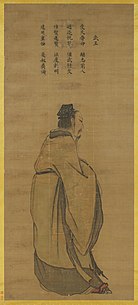 W
WSon of Heaven, or Tianzi, was the sacred imperial title of the Chinese emperor. It originated with the ancient Zhou dynasty and was founded on the political and spiritual doctrine of the Mandate of Heaven. The secular imperial title of the Son of Heaven was "Emperor of China".
 W
WA speech from the throne is an event in certain monarchies in which the reigning sovereign, or a representative thereof, reads a prepared speech to members of the nation’s legislature when a session is opened, outlining the government’s agenda and focus for the forthcoming session; or—in some cases—closed. When a session is opened, the address sets forth the government’s priorities with respect to its legislative agenda, for which the cooperation of the legislature is sought. The speech is often accompanied with formal ceremony and is often held annually, although in some places it may occur more or less frequently, whenever a new session of the legislature is opened.
 W
WThe Tetrarchy was the system instituted by Roman Emperor Diocletian in 293 to govern the ancient Roman Empire by dividing it between two senior emperors, the augusti, and their juniors and designated successors, the caesares. This marked the end of the Crisis of the Third Century.
 W
WA throne is the seat of state of a potentate or dignitary, especially the seat occupied by a sovereign on state occasions; or the seat occupied by a pope or bishop on ceremonial occasions. "Throne" in an abstract sense can also refer to the monarchy or the Crown itself, an instance of metonymy, and is also used in many expressions such as "the power behind the throne". The expression "ascend (mount) the throne" takes its meaning from the steps leading up to the dais or platform, on which the throne is placed, being formerly comprised in the word's significance.
 W
WA throne room or throne hall is the room, often rather a hall, in the official residence of the crown, either a palace or a fortified castle, where the throne of a senior figure is set up with elaborate pomp—usually raised, often with steps, and under a canopy, both of which are part of the original notion of the Greek word thronos.